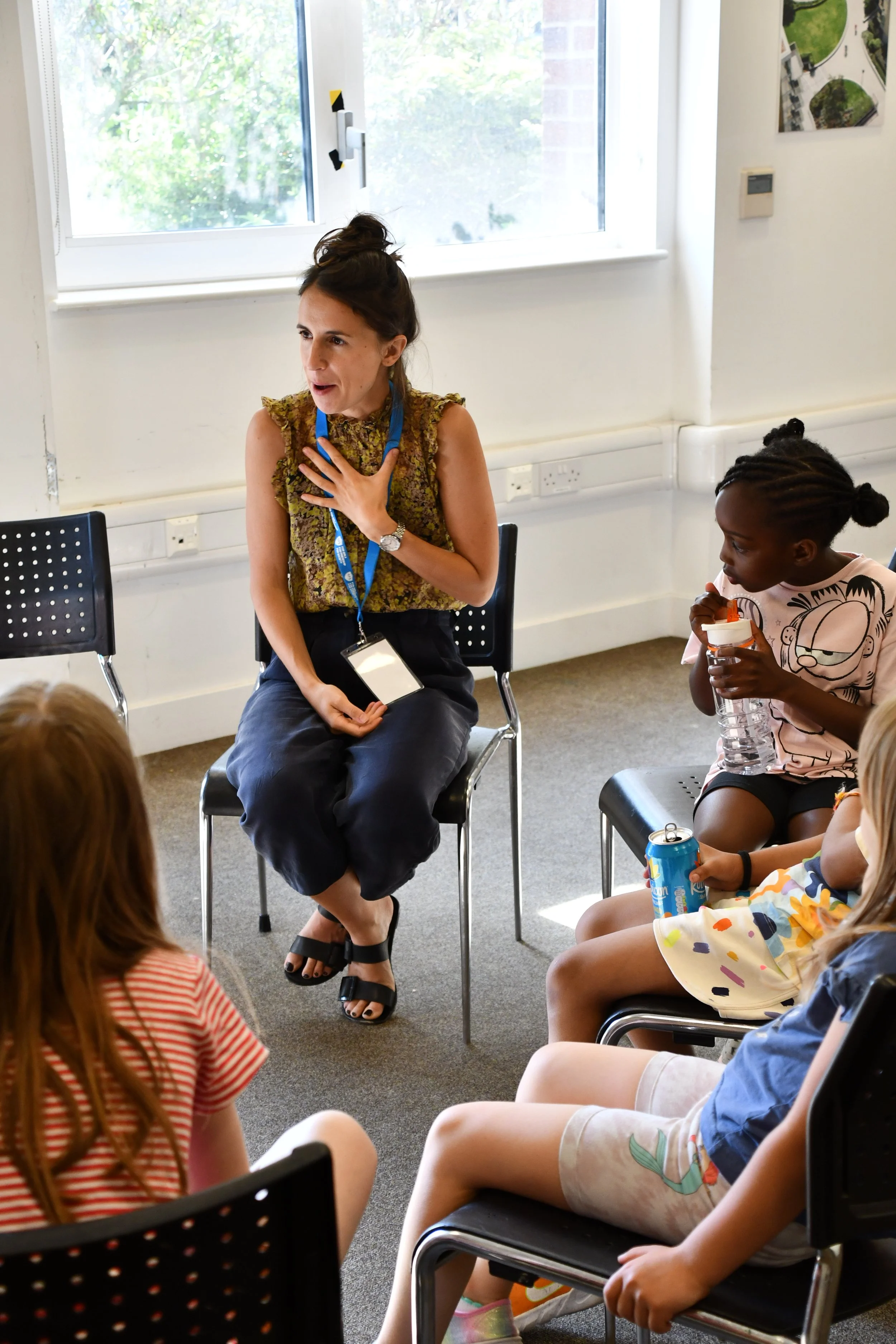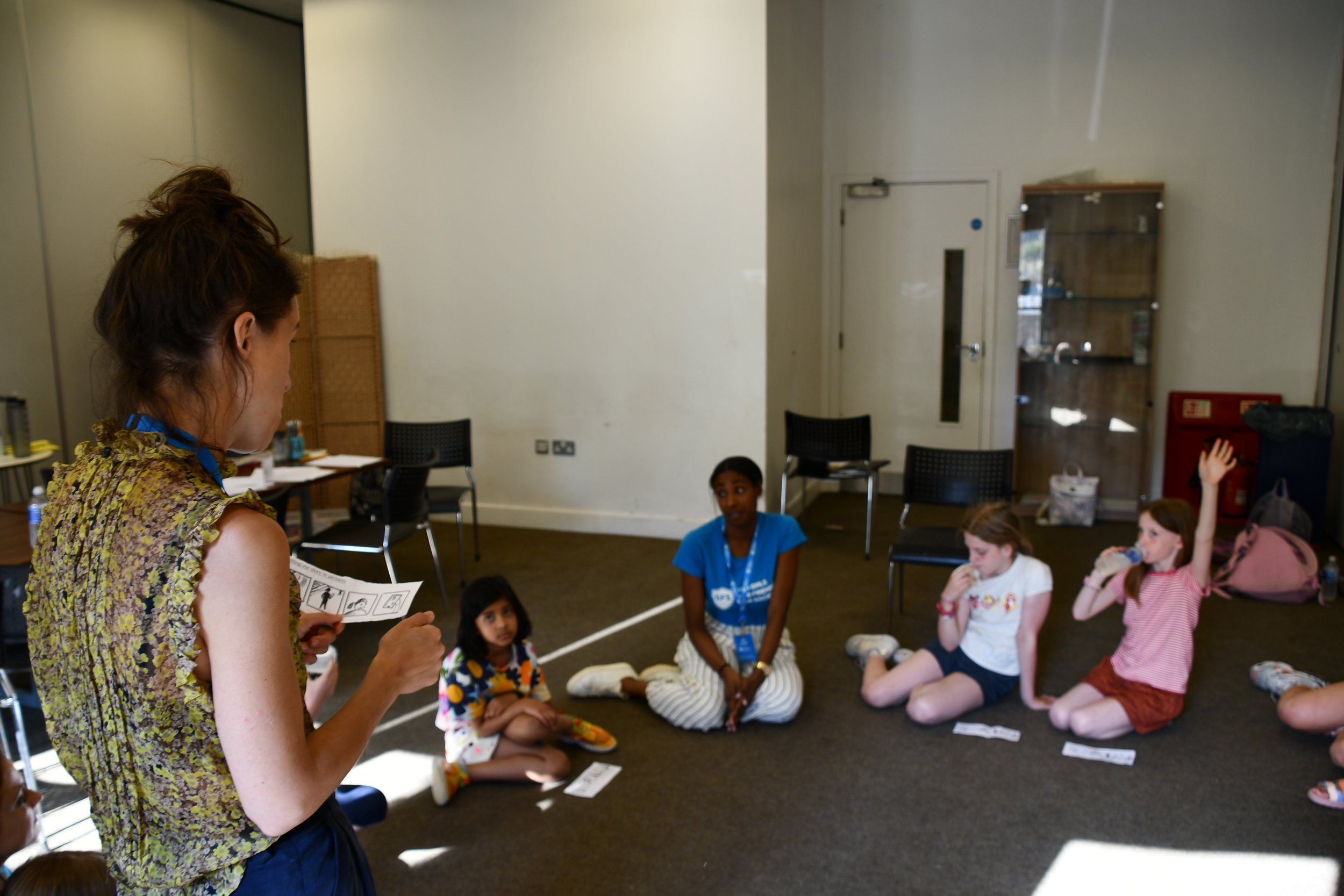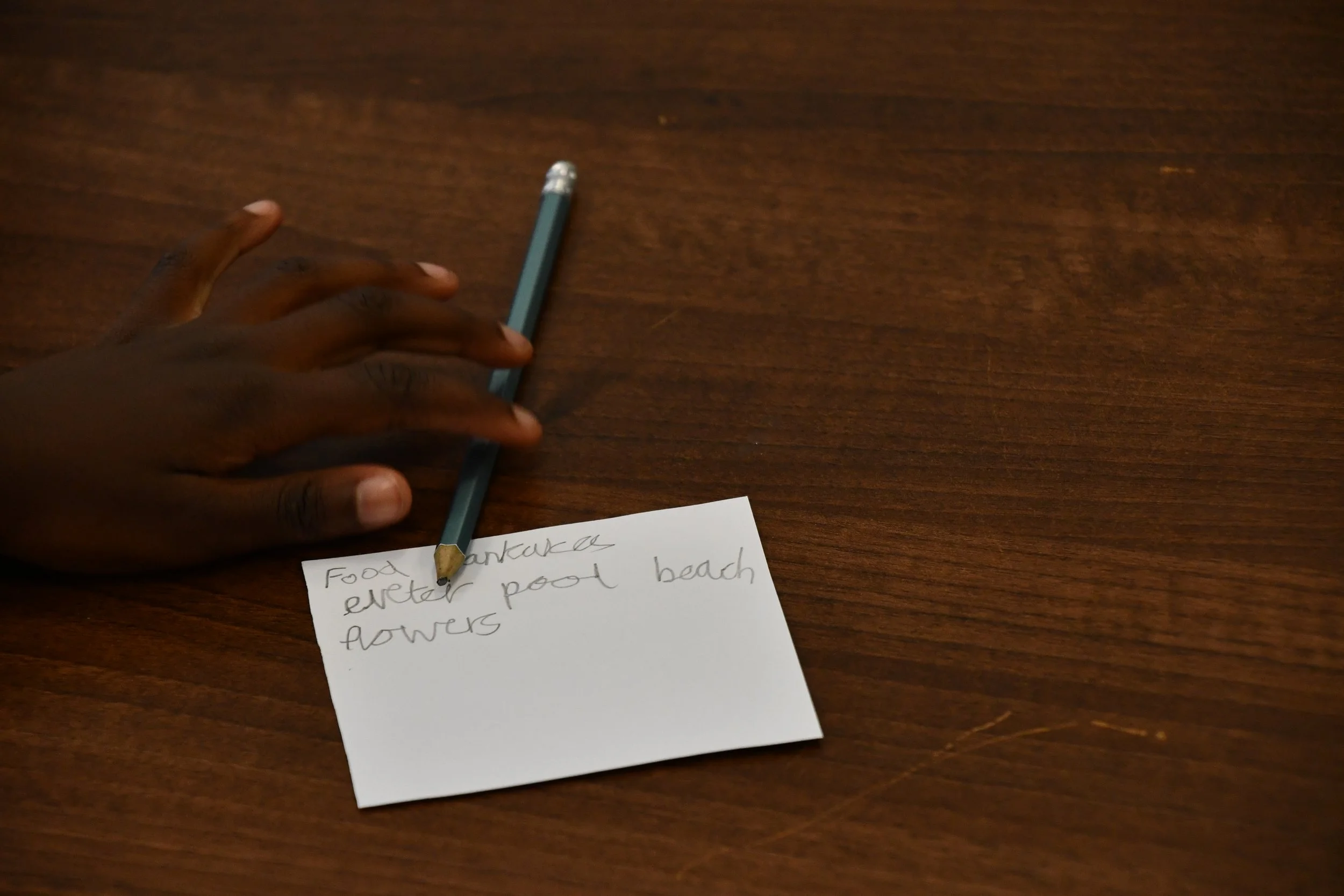This was a chance to work with the feminist charity Girls Friendly Society, who provide girls from as young as five with empowering activities and workshops to strengthen their confidence and prevent the deterioration of self-esteem that tends to happen at around 11.
I thoroughly enjoyed the workshop I led here, based around the theme of ‘place,’ and with the objective of creating a story with a storyboard based on experiencing a favourite place.
Lesson Plan
Warm up exercise (10 mins). We pretend there is a giant map on the floor, and Hackney is in the centre of it. We position ourselves where we live, where we’re from, where our favourite holiday was. The fun is how wildly different our conception of the map is – students will laugh as they try to find Jamaica or Columbia etc. Each share.
Group discussion (2 mins): Places have such an effect on us. Why is this?
Possible answers:
They are what we see every day
They are where important things happen
They bring joy by their beauty
Activity 1 (10 mins): Interview someone else about a favourite place and report back in pairs on the other’s answers. Your favourite place might be somewhere you’ve always known, like another city, or your own bedroom; somewhere you’ve only just visited; or somewhere you’ll never go, but love the idea of, like another planet!
Group discussion: which details stood out for us from all of these descriptions? Which places can we see clearly?
Activity 2 (5 mins): A series of 60 second lists:
- things you might find in a park
- things you need when visiting a hot place
- places people go when they need to cheer up
- emotions you feel when you’re on holiday
Activity 3 (15 mins): Think again about your favourite place. Imagine you are there. How could you show your feelings without using too many words? For example, if you are in a silent film? In pairs, try out some ideas of how to act your love and appreciation for your place. The confident ones can show us! (this could be a game of charades). Possible answers:
Smelling the flowers
Listening to the birds
Eating your favourite food
Pick up all the rubbish
Cry with happiness
Possibility here to keep pairs in their spaces, and to continue with character exercise so that they don’t break flow.
Activity 4 (15 mins): Give out handout first. What is happening here? Can you see how the person has made individual pictures of what we would see if we were watching a film? We see things either far away, close up, or in between.
If we were to make a film about our love of this place, what would we want to show our audience? The whole place? A close up of something? Something in between? Let’s draw our ideas on a ‘storyboard.’ A storyboard is a collection of pictures that we use to plan what we will show our audience. How will you show your place, and your reaction to it? Try to fill three squares of your storyboard.
Activity 5 (10 mins):
Imagine having to leave your favourite place (because there is an emergency, because aliens are landing there, or because you have to go back to school?! ). What could be a reason you need to leave your favourite place? Can you draw it on your storyboard?
Activity 6 (5 mins):
In your film, you are the main character.
‘Characters’ are what we call people who are in stories.
We also call someone a ‘character’ when they are funny or unusual. Why do you think we do this? Have you ever been called a ‘character’?
In stories, we learn what sort of person a character is by the way they deal with a problem. For example, let’s say I want to get to Katie, but this heavy chair is in my way. Am I going to kick it to one side, call someone to help me move it, take it apart with tools…? What would each of these methods say about my character?
Possible answers:
Thoughtful; Practical; Angry
If you were the main character in your film, how would we see your character by the way you have dealt with this problem of having to leave your place?
Activity 7 (5 mins):
Finish your storyboard by filling in the next squares with you dealing with your problem.



